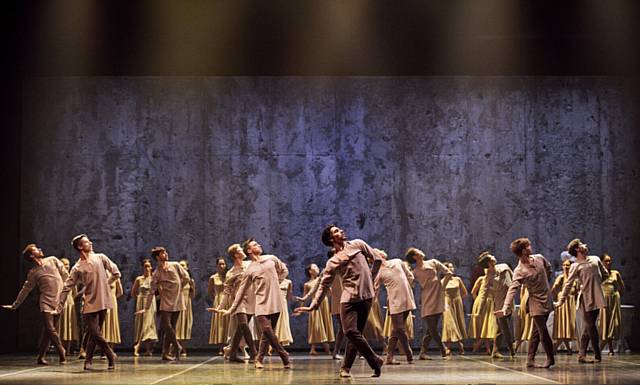Classic ballet shake-up a triumph
Reporter: Paul Genty
Date published: 28 September 2016

A scene from Akram Khan's reimagining of Giselle
GISELLE
(Palace Theatre, Manchester, to October 1)
BALLET fans can forget everything they know about this earliest of classical ballets, born in the 1840s to help usher in the age of "modern" ballet.
Renowned choreographer Akram Khan's first full-length work - a co-production by English National Ballet and the Manchester International Festival - marks the run-up to the main festival next summer with a look at the sort of works we are likely to see fighting for attention.
To a degree, offering the show now rather than in a year can be seen either as a taster of what is to come (in which case, get your tickets for next year's festival now), or a way to keep a sub-standard work out of the main schedule.
Have no fear: this rendering of the classic mints it fresh, keen and energetic; it's a bleak and brilliant triumph in almost every department.
Khan takes the mystical Wilis by the scruff of their necks, set his Giselle not in some Ruritanian realm between life and death but in front of a stark, vast concrete wall, and has introduced energy-packed steps that gain their power from unison repetition, two wild bursts of stunningly lyrical beauty (the Giselle/Albrecht pas de deux, one in each act) and an extraordinary, insistent and rhythmical industrial-orchestral score by Vincenzo Lamagna that refers back to the Adolphe Adam original, then grinds it into the ground.
Where traditional Giselles have been rather elegiac, ethereal and frankly a little dull, this one hits you in the face then comes back for more. It's rivetingly modern.
In truth this Giselle does not rely on superb dancing to achieve its effects. This is a director's ballet. Alina Cojocaru (Giselle), Isacc Hernandez (Albrecht) and Cesar Corrales (Hilarion) are fine, strong dancers; but a primary skill here is staying on your toes (literally, in the case of the mistrusting spirit Wilis), not making us swoon at the skills on display.
Khan suggests class and social barriers with his concrete wall and to be honest it makes about as much sense as the original vengeful-spirit saga, and is about as meaningful.
All you need to know is that the mood created by the music, Tim Yip's set design and Mark Henderson's bold lighting alone are worth the price of admission; the dancing is icing on a stunningly tasty cake.
Most Viewed News Stories
- 1Man jailed for 33 years following investigation into years of abuse in Oldham
- 2Closures at Big Lamp roundabout in Shaw
- 3‘Abandoned’ Coldhurst medical centre put up for auction
- 4Uppermill mum’s bid to combat loneliness has helped 30,000 people living in isolation
- 5The Oldhamers handed awards in King’s New Year’s Honours List




